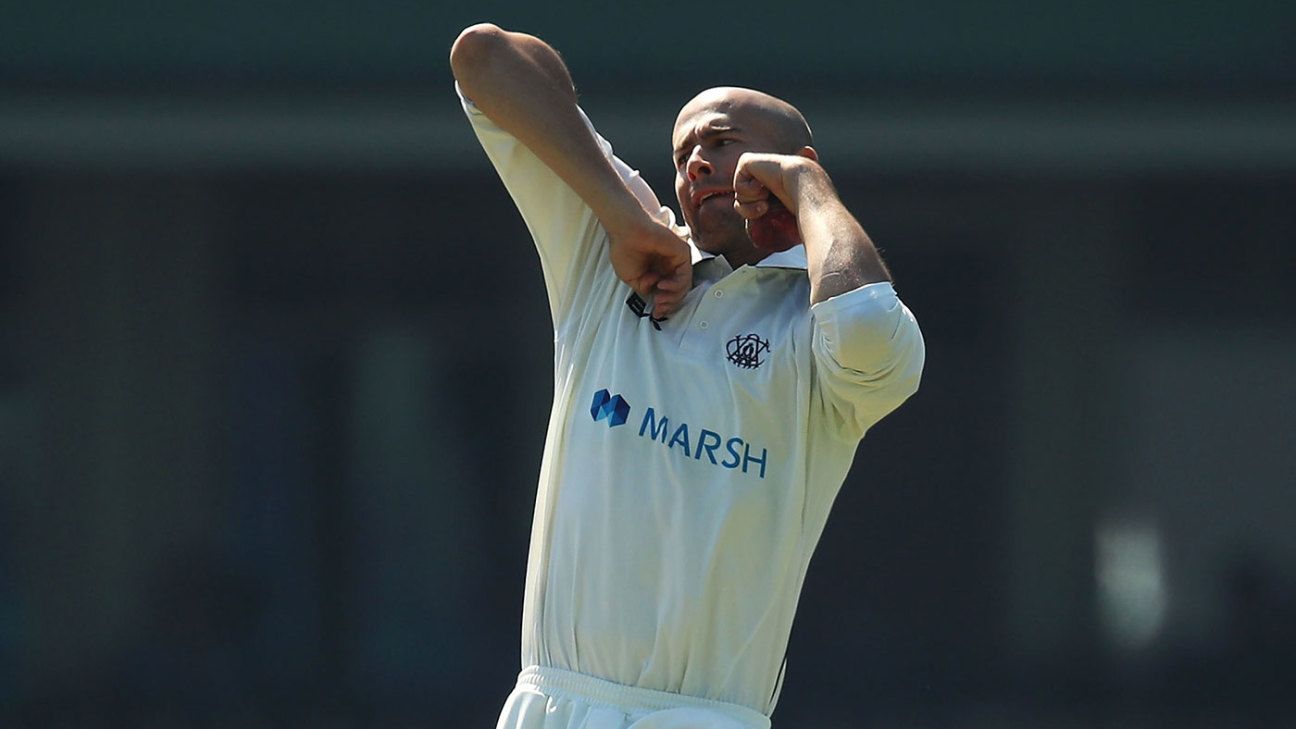
Drew Ginn, Cricket Australia's high-performance chief, concedes that not all states are mindful enough of nurturing spin bowling in domestic cricket, and has empowered the pathways manager Graham Manou to take a more focused approach to developing Australian spin bowlers as one of the key blind spots of the national team's armoury for overseas tours in particular.
Speaking ahead of the start of the Sheffield Shield in Adelaide from Saturday, Ginn acknowledged that some states were more amenable to developing spin bowlers than others, in concert with the types of pitch conditions prepared at their home venues. As a consequence, he said that CA needed to be doing all it could to prepare players for coping with challenges they were likely to face overseas, particularly in terms of bowling spin and batting effectively against it.
Australia have won just one series in Asia since 2006, on the 2011 tour of Sri Lanka, losing or drawing eight others in India, Sri Lanka, Bangladesh and the UAE in that time. While the Test match exploits of Nathan Lyon have been triumphs of persistence and faith, the retirement of Steve O'Keefe earlier this year again left the reserve cupboard nearly bare, save for the encouraging progress of the Queensland wrist spinner Mitchell Swepson, who told ESPNcricinfo he had needed to learn to play "second fiddle" to the pacemen in Brisbane.
ALSO READ: Sheffield Shield preview: Squads, players to watch, new signings and fixtures
CA is yet to re-hire the noted spin-bowling coach Craig Howard, a mentor to Swepson and others such as Ashton Agar, but Ginn said that the governing body needed to provide opportunities for spin bowlers to develop outside the state system when Shield pitches and match scenarios did not afford them enough of a chance to grow. Manou, as manager of the talent ID path from junior ranks through club and representative games up to national selection, is pivotal in this area.
"Spin bowling's something we need to keep fostering and driving forward," Ginn said. "If the states, the environments they're playing in, aren't really catering to that, certainly one of the aspects of what we can do in the national system is making sure that centrally, we're providing opportunities to ensure that players are international ready.
"We're always discussing about the next wave of young kids that are coming through and the skill sets we need for the national team. We've got a model called series planning, where we're looking 18 months to two or three years down the track to major events and we're looking at where our gaps and opportunities are.
"One of the skill sets is spin bowling, playing spin and delivering spin. The view for us is let's not try to get everyone in the system doing the same thing all at the same time. Let's make sure we understand what's happening in the different state environments [and] internationally let's look at what we've got to get ready for, and then make sure we're really providing the opportunities for players that are coming through."
Howard has noted that while Lyon has proven to be extremely durable, the next rank needed to be encouraged and placed under the pressure of match scenarios in which they were required to bowl sides out in the fourth innings on deteriorating surfaces: a set of circumstances that has grown increasingly rare in the Shield and has advocated changes to pitch preparation to rebalance things. Pre-coronavirus, conversations had turned to whether spin bowlers might be granted chances to play in overseas first-class tournaments in addition to Australia A tours, though this option now looks far less viable.
ALSO READ: Cricket Australia spin chief: Sheffield Shield pitches, not the ball, need to change
"This year's going to be difficult from that point of view, but maybe when things do open up a little bit, getting our spinners to work in other first-class systems around the world so they can have that feeling of having to be the man and having to be the person to bowl that team out on the last day," Howard said. "Or looking at options within our first-class system as far as scarification of wickets in their areas.
"Gaz obviously isn't getting any younger, although he's incredibly fit and he's not going anywhere any time soon, if something was to happen to him, we want to make sure there's plenty of back-up options, not just the one or two that are playing Shield cricket. Ideally it'd be great to have six or eight options to pick the best one available at the time. Also when we head outside of Australia, there's going to be a real need for two, sometimes three spin options in some of these areas so we want to make sure we've got six or eight to pick the best three."
Ginn, who works in a parallel role with CA's head of national teams, Ben Oliver, said that it was important for venues to accurately reflect their characteristics in Test matches, rather than providing grassier or more "sporting" pitches for Shield games.
"There's been some good conversations during the winter months," he said. "We've got to keep making sure that every part of the game is fostered and developed, and the spin bowling stats are something that people do cite. I know there's discussions always among curators as to how they make their venues play so that's really critical to us.
"But also how do you make sure that the venue characteristics that do allow for spin bowling are really utilised. So there's good changes that have been occurring the last few years to make sure every major venue plays as the major venue characteristics are, and I think for spin bowling, hopefully in the next one to two seasons we start to see a change there."















 Phone: (800) 737. 6040
Phone: (800) 737. 6040 Fax: (800) 825 5558
Fax: (800) 825 5558 Website:
Website:  Email:
Email: 






